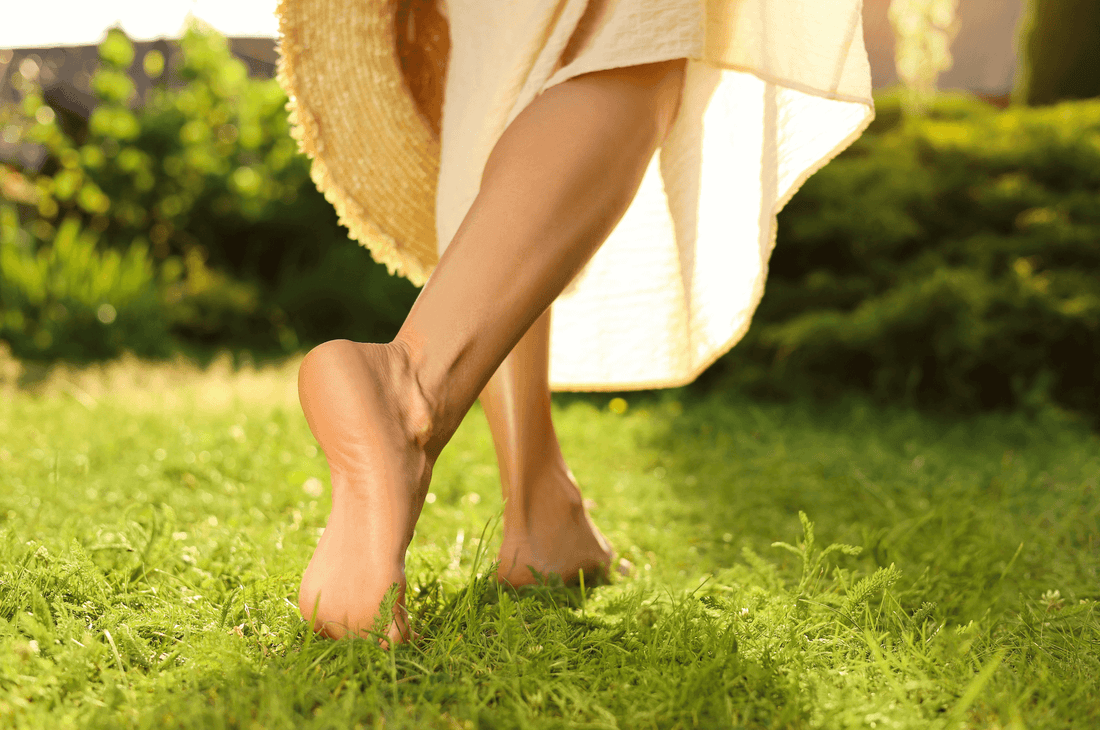
The Surprising Health Benefits of Earthing
James McWhinney
In a world where technology continually generates an invisible sea of electromagnetic waves, reconnecting with the Earth’s natural energy is not just novel—it’s necessary. The practice of earthing, otherwise known as grounding, has garnered not just the attention of wellness enthusiasts but also that of scientists and health professionals. But how does this simple, almost ancient practice, hold up under the rigorous scrutiny of modern science?

The Science Behind Earthing
Walk barefoot across the beach or lay on the grass, and you might feel a subtle, instant calm. But why? Researchers have been exploring how direct contact with the Earth's surface can lead to measurable health benefits. When you walk barefoot, you’re not just touching the Earth—you're connecting with its natural, electrical charge.
How Earthing System Works
Our body operates electrically—our cells transmit signals via electrical impulses. This is where earthing comes in. When our skin comes into contact with the Earth’s surface, there’s a transfer of free electrons from the Earth into the body. This natural phenomenon works much like a grounding wire that diverts unwanted electrical charge away from electrical installations.
Who Discovered Earthing and Why It's Important
While humans have walked barefoot for millennia, the introduction of insulating materials like rubber and plastics has disconnected us over the last couple of hundred years.
The resurgence of earthing can be attributed to Clint Ober, who, in the late 1990s, considered the implications of living ungrounded. Scientific studies have since investigated why earthing wire is used and why earthing is necessary in household circuits, drawing parallels between Earth's surface and its function in providing a common grounding point for electrical stabilisation.
Try it yourself: Start with 20 minutes barefoot outdoors today — you may feel the difference in your body and mind.
What Happens To You When Earthing?
When we ground ourselves, the electrons we receive help neutralise free radicals, which are highly reactive molecules that can damage cells and contribute to inflammation and disease. The Journal of Environmental and Public Health suggests that earthing may be the primary factor regulating endocrine and nervous systems, which is why earthing is important in electrical, physiological terms.
Why is Earthing Necessary?
Earthing is thought to reduce inflammation by neutralising excess positive charges. Moreover, it can improve circulation, sleep, and vitality. As to why earthing is provided in buildings—it’s to ensure safety from electrical surges and faults. Similarly, in our bodies, grounding could help maintain our bioelectrical homeostasis.

Practical Tips for Incorporating Earthing into Your Life
Here are some practical tips to incorporate earthing into your daily routine to connect with the grounding energies of Earth:
- Feel the Earth: Walk barefoot on grass, soil, or sand for at least 30 minutes a day. This practice is the most direct way to earth and allows you to connect with the Earth’s natural surface.
- Sleep Grounded: Consider using specialised earthing sheets or mats that ground you while you sleep. These tools connect to the grounding wire in your house and simulate the effect of barefoot earth contact.
- Earthing Work Breaks: Taking short breaks to stand or walk barefoot outside can also help reconnect you to the Earth’s energies during your workday.
- Connect with Nature: Engage in gardening or yard work without gloves occasionally. This direct hand-to-soil contact can be profoundly grounding.
- Mindfulness and Earth: Combine earthing with mindfulness or breathing exercises outdoors to amplify its effects.
- Opt for Natural Materials: When barefoot isn't practical, choose leather-soled shoes which tend to have better electron conductivity than synthetic materials.
Many people report considerable improvements in overall well-being after making it part of their routine. Grounding isn't a panacea, but it’s an accessible tool that supports a holistic approach to health.
Reconnect now: Indoor grounding products can bridge the gap if you can’t get outdoors daily. Shop our grounding range.
A Step Toward Better Health
In an age of rampant chronic inflammation and disconnected lifestyles, earthing strides back to our ancestral roots. It reminds us that health does not exist only within the confines of the body but also within our environment. So next time you step outside, take a moment to remove your shoes and let your toes wriggle into the Earth's embracing currents. It might just be the foundation for better health.
Experience the benefits tonight with a grounding sheet designed for all-night comfort and conductivity.










